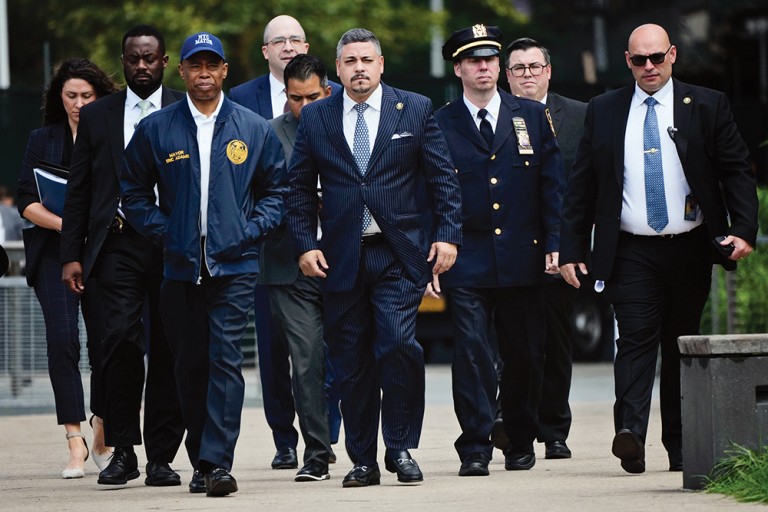By Forum Staff
The City Police Department has implemented new practices to better address the challenges that arise during spontaneous protests, Mayor Eric Adams, City Corporation Counsel Sylvia Hinds-Radix, and City Police Commissioner Edward Caban announced on Tuesday.
The new four-tiered approach to handling protests is codified in a legal agreement stemming from lawsuits filed against the City of New York during the Black Lives Matter protests in 2020.
Each tier defines NYPD protocols and practices for engaging with protesters based on conditions on the ground. The approach allows the NYPD to move progressively from Tier 1 to Tier 4 or begin its strategic response at Tier 3 if necessary.
- Tier 1 is used for a peaceful protest. Under Tier 1, the NYPD will temporarily accommodate peaceful protests passing through the streets or sidewalks. Community affairs officers can liaise with the protesters while the NYPD retains the ability to use patrol officers to enforce traffic laws and direct crowds.
- Tier 2 is used when the NYPD believes that illegal activity may be about to occur or that the protest is going to block critical infrastructure. The NYPD can station additional officers, including the SRG, in the vicinity of the protest in anticipation of the need for law enforcement intervention.
- Tier 3 takes effect once there is probable cause that an individual has committed a crime. The NYPD will deploy enough officers to address the individuals breaking the law. Specialized units, such as the SRG, may be deployed as necessary in this tier.
- Tier 4 commences when the protest must end. It is activated when either (1) protesters are trying to enter or blocking entry to sensitive locations or (2) crimes are so widespread that de-escalation and/or targeted enforcement has not worked or cannot work. In this tier, the only viable option is to end the protest. Before ending the protest, the NYPD must issue dispersal orders to warn the crowd, point out exit points, and identify a location where a protest could continue if feasible.
Under the agreement, the NYPD will adopt training procedures for the new tiered approach. After that, a collaborative committee will be formed consisting of attorneys for the plaintiffs (including the Office of the New York Attorney General), as well as the New York City Department of Law, the NYPD, police unions, and the New York City Department of Investigation (DOI), which will serve as chair of the committee.
The committee will meet over three years on a regular basis to review the NYPD’s implementation of the terms of the agreement, including the effectiveness of the tiered approach in practice. DOI will review 12 protests — 10 chosen by the plaintiffs and two by the defendants — and file periodic progress reports with the U.S. District Court for the Southern District of New York, where the suits were originally filed. DOI will also issue reports at 18 months and 30 months, as well as a final report at month 36.

